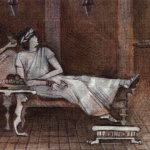
On Horseshoes and Hand Grenades
When they were younger, my children used to joke that it was OK for some things if you were just “close,” that it wasn’t necessary to be precise about everything. The analogy was that such things were like playing horseshoes or setting off hand grenades.
I used to believe that was case for joint injections. There is literature that shows that only about 52% of injections, almost regardless of injectors’ expertise and training, could be documented to be intraarticular—66% for knees, 83% for elbows, 10% for shoulders, 50% for wrists, and none in carpal metacarpal, metacarpophalangeals, interphalangeals, or acromioclavicular joints.
I was nonplussed by this. I thought we did better—I certainly thought I did (and I don’t know that I don’t!). This could be improved by imaging and by air arthrography.2,3 So, would ultrasound-guided injections be better and, perhaps more importantly, would it matter therapeutically?
My new colleague, Karina Torralba, with expertise in musculoskeletal ultrasound, sees ultrasound as enhancing the physician exam (reminding us of or teaching us the relevant anatomy, which informs the exam), as offering important diagnostic information (early rheumatoid arthritis, soft tissue disorders, and other situations), helping us follow outcomes for some clinical conditions, perhaps assisting us therapeutically (grading synovitis, for example), and providing educational value in simulations (for fellows and others). I expect to learn more from her.
A recent report found that ultrasound indeed improved accuracy of injections, but interestingly could not show that outcomes from therapeutic injections were better.4 Maybe my kids were right.
Is Amyloid an Infectious Disease?
It could be, according to an article in Science.5 Despite the old precept of being wary of publications that have almost as many authors as data or subjects, this was a provocative study. Mouse brain lysates containing aggregates of amyloid beta peptide injected intraperitoneally into naive recipients caused plaque-associated pathological changes in brains. Why similar inoculations by intracerebral, intravenous, oral, intraocular, or intranasal routes failed to induce disease was unclear and certainly requires that the experiments be confirmed. The pathologic mechanism was reminiscent of prion transmission. This has implications for therapeutic strategies (attempts to block protein transmission) including a cautionary note for stem cell–based approaches.
These data suggested that exercise led cells to release metabolites that can act on genes regulating glucose and lipid metabolism. Maybe that’s why exercise is good.
